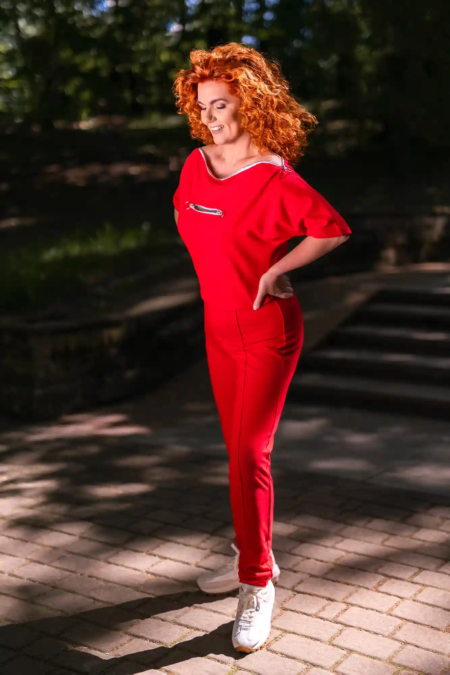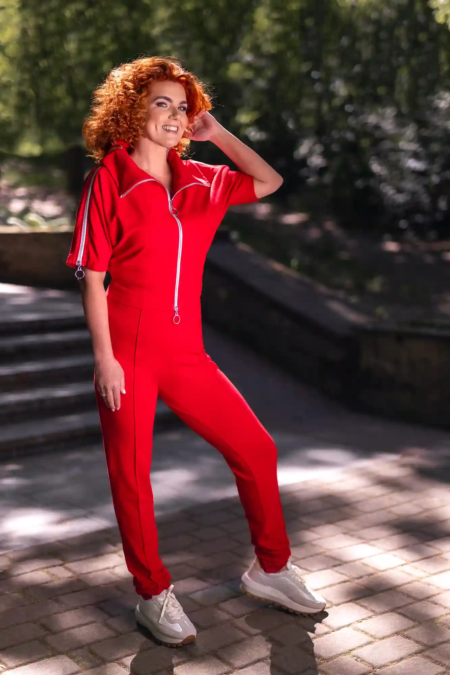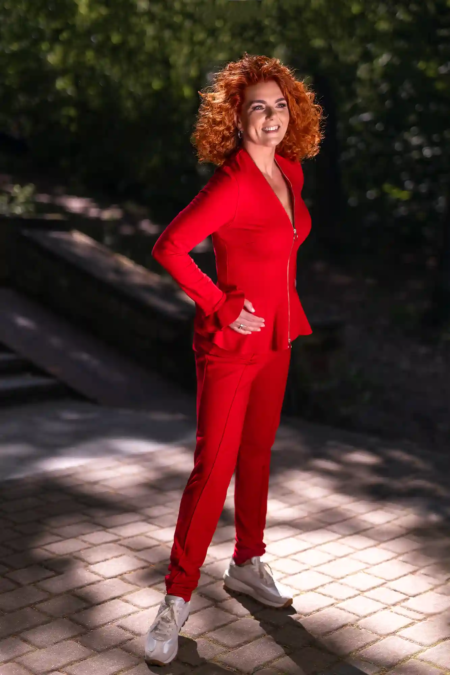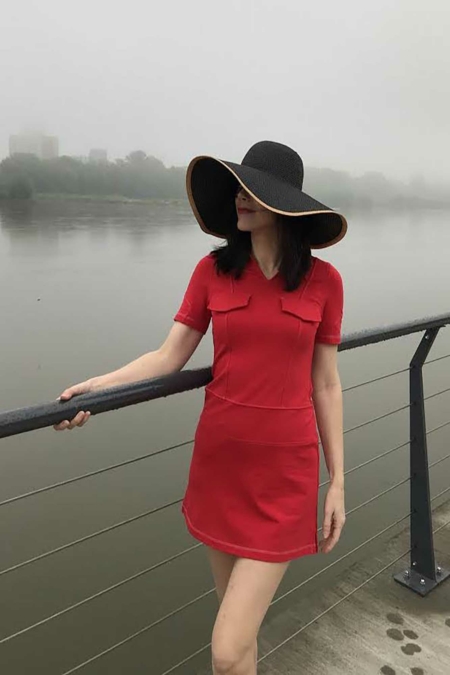Love is in the air
Love is in the air
Love is in the air to kolekcja w przepięknej klasycznej czerwieni. Poszczególne modele nadają się idealnie zarówno do pracy, na romantyczny spacer jak i weekendowo-wakacyjne wyjazdy. Pierwsza sesja kolekcji została zrobiona w Warszawie. W celu uzyskania odpowiedniego światła i atmosfery sesja wystartowała 11.06.2020 o 5 rano i chociaż godzina była sporym wyzwaniem dzięki 1000% zaangażowaniu moich kochanych Modelek oraz Mojego osobistego również kochanego Fotografa w pełnej gotowości stawiliśmy się pod słynną Palmą na rondzie gen. Charles’a de Gaulle’a i mięliśmy płonną nadzieję, że nie odbije Nam palma, ale niestety myliliśmy się ;-) Dowodem na tę nietypową chorobę, na którą jeszcze nie wymyślono nazwy jest cała plejada pięknych plenerowych zdjęć zrobionych w Naszym ukochanym mieście – Warszawie.

Kolekcja Love is in the air jest jak to miłość ognista i gorąca czyli czerwona. Nowoczesna i stylowa nawiązująca do lat 60, 70, 80, 90 i współczesnych czyli ponadczasowa idealna do i po pracy co mam nadzieję oddają w pełni prezentowane zdjęcia.
Love is in the air kolekcja od podstaw wyprodukowana w Polsce 🇵🇱 z dzianiny od polskiego producenta, rodzinnej firmy z Woli Zaradzyńskiej 🇵🇱 w polskiej pracowni konstrukcji ubioru w Łodzi 🇵🇱 według mojego projektu inspirowanego życiem w moim rodzinnym mieście Warszawie ❤️
Pierwszym miejscem naszej sesji kolekcji Love is in the air było słynne warszawskie rondo z palmą. Nazwa ronda nadana w 1990 roku, upamiętnia Charles’a de Gaulle’a, prezydenta Francji, który w latach 1919–1920 jako członek misji wojskowej brał udział w wojnie polsko-bolszewickiej, a mieszkał przy ulicy Nowy Świat. Została nadana w setną rocznicę jego urodzin, co upamiętnia tablica umieszczona na budynku przy ul. Nowy Świat 15/17 (od strony Alej Jerozolimskich). Inicjatorką nadania nazwy była Halina Skibniewska, przewodnicząca Towarzystwa Przyjaźni Polsko-Francuskiej. Dlatego w świetle tych wszystkich wydarzeń właśnie to rondo wybrałyśmy do naszej miłosnej warszawskiej sesji 🇵🇱❤️
Na Drugie miejsce naszej miłosnej sesji Love is in the air wybraliśmy zabytek z bardzo interesującą historią – most Księcia Józefa Poniatowskiego – generała, ministra wojny i naczelnego wodza Wojsk Polskich Księstwa Warszawskiego, marszałka Francji, członka Rady Stanu Księstwa Warszawskiego. Most zbudowany według projektu inżynierów Mieczysława Marszewskiego, Bronisława Plebińskiego i Wacława Paszkowskiego powstał w latach 1904–1914 lub 1904-1913. Autorem oprawy architektonicznej mostu i wiaduktu był Stefan Szyller. Wieżyce przy wjeździe na most miały pełnić funkcje obronne. Powstały na żądanie rosyjskich władz wojskowych.
Była to największa inwestycja miasta od czasu budowy systemu kanalizacji. Most został wysadzony przez Niemców 13 września 1944 o godz. 12.15 podczas powstania warszawskiego i walk toczonych na Pradze. Odbudowany według projektu Stanisława Hempla i oddany do użytku 22 lipca 1946. Po odbudowie most stracił część elementów swojego dotychczasowego charakteru. Ozdobną balustradę zastąpiono prostym stalowym parkanem.
Nie odbudowano też kilku kamiennych ławek, które stały na filarach mostu. Inna jest też konstrukcja samych przęseł. Szczątki oryginalnych ławek do dzisiaj leżą w wiślanym nurcie i można je zobaczyć przy niskim stanie wody. To tylko niektóre interesujące fakty z historii mostu. Dociekliwych zapraszam do poszerzenia wiedzy.
Gdybyś ujrzeć chciał nadwiślański świt
Już dziś wyruszaj ze mną tam
zobaczysz jak, przywita pięknie nas
Warszawski dzień
– właśnie te słowa z piosenki Czesława Niemena zaprowadziły Nas na bulwary wiślane. Przepiękny zamglony świt, który zobaczyliśmy tak bardzo nas zaskoczył, że postanowiliśmy zrobić w tym przepięknym miejscu kolejną sesję kolekcji Love is in the air. Mam nadzieję, że poczujecie tę wyjątkową atmosferę, która Was zachęci do spacerów o tej naprawdę magicznej porze 🇵🇱
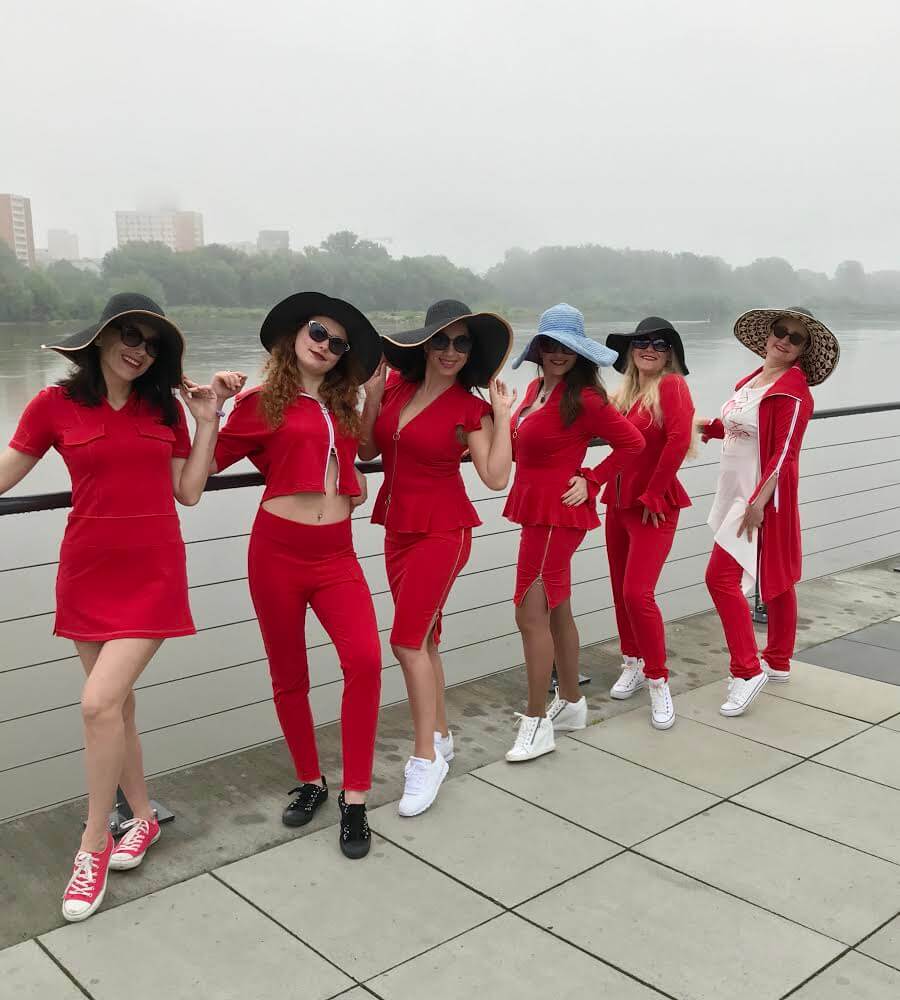
Na naszym miłosnym szlaku kolekcji Love is in the air nie mogło zabraknąć wizyty u Zygmunta i chociaż musiałyśmy się ustawić w kolejce to jednak było warto. W końcu to pomnik króla Zygmunta III Wazy znajdujący się na placu Zamkowym w Warszawie. Monument został wzniesiony w latach 1643–1644 z fundacji Władysława IV Wazy według projektu Augustyna Locciego i Constantino Tencalli. Jego wzniesienie miało cel polityczny (gloryfikacja dynastii Wazów i wzmocnienie władzy króla), dlatego też została umieszczona na placu przed Bramą Krakowską – w tamtym czasie najważniejszym węźle komunikacyjnym stolicy. W tym celu oczyszczono teren z istniejącej przy bramie zabudowy. Projekt wywołał konflikt Władysława IV z nuncjuszem Mariem Filonardim. Największe protesty nuncjusza wzbudziło umieszczenie na kolumnie posągu króla (osoby świeckiej). Zgodnie z tradycją tego rodzaju wywyższenie było bowiem dotąd zarezerwowane dla Matki Boskiej, Chrystusa i świętych. Kolumna ma bardzo interesującą historię i z racji daty jej powstania również bardzo długą, ale zachęcam do zapoznania się z nią ponieważ była pierwszą kolumną osoby świeckiej wzniesioną w nowożytnej Europie.
Po wizycie u Zygmunta nastała wiekopomna chwila odwiedzin Zamku Królewskiego 😉Pierwotnie rezydencji książąt mazowieckich, a od XVI wieku siedzibie władz I Rzeczypospolitej: króla i Sejmu (Izby Poselskiej i Senatu).
W swojej długiej historii Zamek Królewski był wielokrotnie grabiony i dewastowany przez wojska szwedzkie, brandenburskie, niemieckie i rosyjskie. W XIX wieku, po upadku powstania listopadowego, przeznaczony na potrzeby administracji rosyjskiej. W okresie I wojny światowej był rezydencją niemieckiego generalnego gubernatora. W latach 1920–1922 siedzibą Naczelnika Państwa, w latach 1926–1939 rezydencją Prezydenta Rzeczypospolitej Polskiej. Spalony i ograbiony przez Niemców w 1939, niemal doszczętnie zniszczony w 1944. W 1965 ocalałe fragmenty zamku oraz budynek Biblioteki Królewskiej, pałac Pod Blachą i Arkady Kubickiego wpisano do rejestru zabytków. Rekonstrukcją zamku przeprowadzoną w latach 1971–1984 kierował Obywatelski Komitet Odbudowy Zamku Królewskiego w Warszawie. W 1979 w zamku utworzono muzeum, powołując państwową instytucję kultury Zamek Królewski w Warszawie – Pomnik Historii i Kultury Narodowej od 2014 działającej pod nazwą Zamek Królewski w Warszawie – Muzeum. Rezydencja Królów i Rzeczypospolitej. W 1980 Zamek Królewski wraz ze Starym Miastem został wpisany na listę światowego dziedzictwa UNESCO, w 1994 wraz z historycznym zespołem miasta z Traktem Królewskim i Wilanowem Królewskim został uznany za pomnik historii 🇵🇱❤️
Właśnie na Trakcie Królewskim miłosnego szlaku Love is in the air okazało się, że królowa nie jest tylko jedna 🇵🇱❤️👑
Następnie Królowe były na ulicy Karowej, która pod koniec XIX wieku stanowiła jedno z niewielu połączeń pomiędzy górną częścią Warszawy i Powiślem a współcześnie jest jedną z najbardziej ciekawych architektonicznie ulic w Warszawie, której spiralny kształt przyozdobiony rzeźbą Syreny z pięknymi balustradami otoczonymi zielenią to prawdziwa uczta dla oczu a zwłaszcza z dodatkiem kolekcji Love is in the air 🇵🇱❤️
Oczywiście Królowe odwiedziły też Uniwersytet Warszawski bo w końcu wiedza to podstawa i każda Królowa o tym wie, zwłaszcza ubrana w kolekcję Love is in the air.
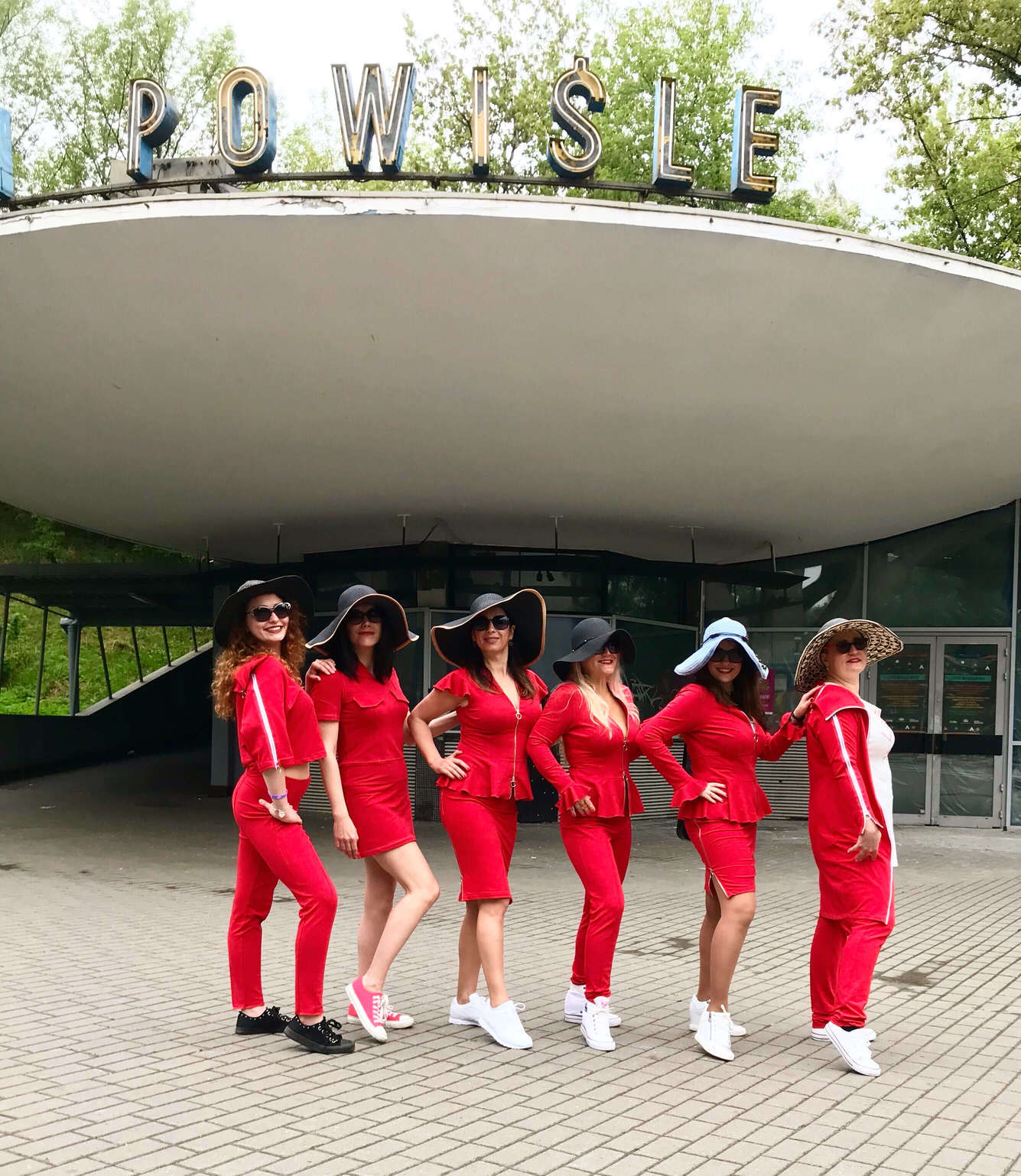
I chociaż to Królowe to na szlaku sesji Love is in the air uwiódł Je Syreni śpiew 😉🥰🇵🇱 Syrena jest bohaterką kilku warszawskich legend. Wszystkie wyznaczają jej rolę patronki i opiekunki miasta. Według Artura Oppmana Syrenę schwytali rybacy i skrępowaną zanieśli ją do wioski. Ta jednak swoim pięknym śpiewem przekonała strażnika, żeby ją uwolnił.
Według Ewy Szelburg-Zarembiny Syrena złotą strzałą miała wskazywać zagubionemu na łowach księciu miejsce jego przeznaczenia, na którym wyrosła Warszawa.
Według kolejnej legendy dawno temu przypłynęły z Atlantyku na Bałtyk dwie siostry – syreny, piękne kobiety z rybimi ogonami. Jedna z nich upodobała sobie skały w cieśninach duńskich i obecnie można ją oglądać siedzącą na skale u wejścia do portu w Kopenhadze. Druga dopłynęła do ujścia Wisły, skąd popłynęła w górę jej biegu. Według legendy u podnóża dzisiejszego Starego Miasta, mniej więcej w miejscu gdzie obecnie znajduje się jej pomnik, wyszła z wody na piaszczysty brzeg, aby odpocząć, a że miejsce się jej spodobało, postanowiła tu zostać. Wracając do kolekcji Love is in the air mam nadzieję, że nie tylko poczujecie się w niej jak Królowe, ale również będziecie w niej uwodzić jak Syreny swoim śpiewem 🧜♀️🎼👑❤️
W końcu Królowe dotarły do dawnego budynku przystanku autobusowego PKP Powiśle, który kiedyś służył jako kasa biletowa a później stał się kultową wizytówką Warszawy. Warszawa Powiśle – czekamy na otwarcie 😉😎🥪🥗🥟🍹🍸🥂🇵🇱
Jest coś prawdziwie magicznego w makach🥰 ich kolor po prostu zniewala, delikatność płatków przypominająca jedwab przyciąga jak magnes, a sprężystość łodygi, która delikatnie kołysze się pod wpływem wiatru przypomina kobietę, która uwodzi swoimi wdziękami 🥰 Nic zatem dziwnego, że naszą miłosną sesję Love is in the air właśnie zakończyłyśmy na polu makowym znajdującym się w Warszawie przy ulicy Polki 7.
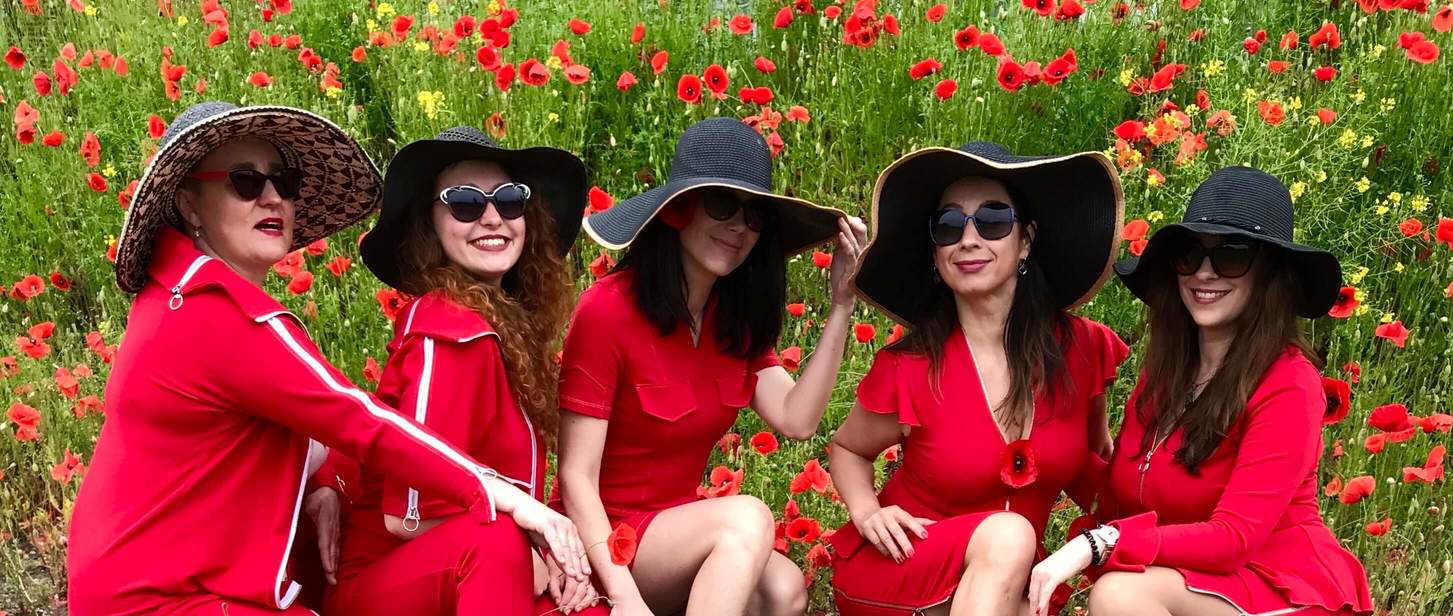
Mam nadzieję, że i Ty wkrótce będziesz mieć okazję zobaczyć to makowe cudo i jak również samą kolekcję. Te z Was, które śledzą moje wpisy wiedzą, że maki to moje ukochane kwiaty 🥰 Byłam bardzo zaskoczona jak zobaczyłam to pole tuż obok miejsca, w którym postanowiłam pół roku wcześniej zrobić moje atelier. Wierzę w przeznaczenie dlatego już teraz wiem, że to jest moje miejsce na ziemi zarówno w sensie geograficznym jak i metaforycznym bo w końcu po wielu życiowych zakrętach zajęłam się moim ukochanym projektowaniem ubioru.
Na koniec małe motto
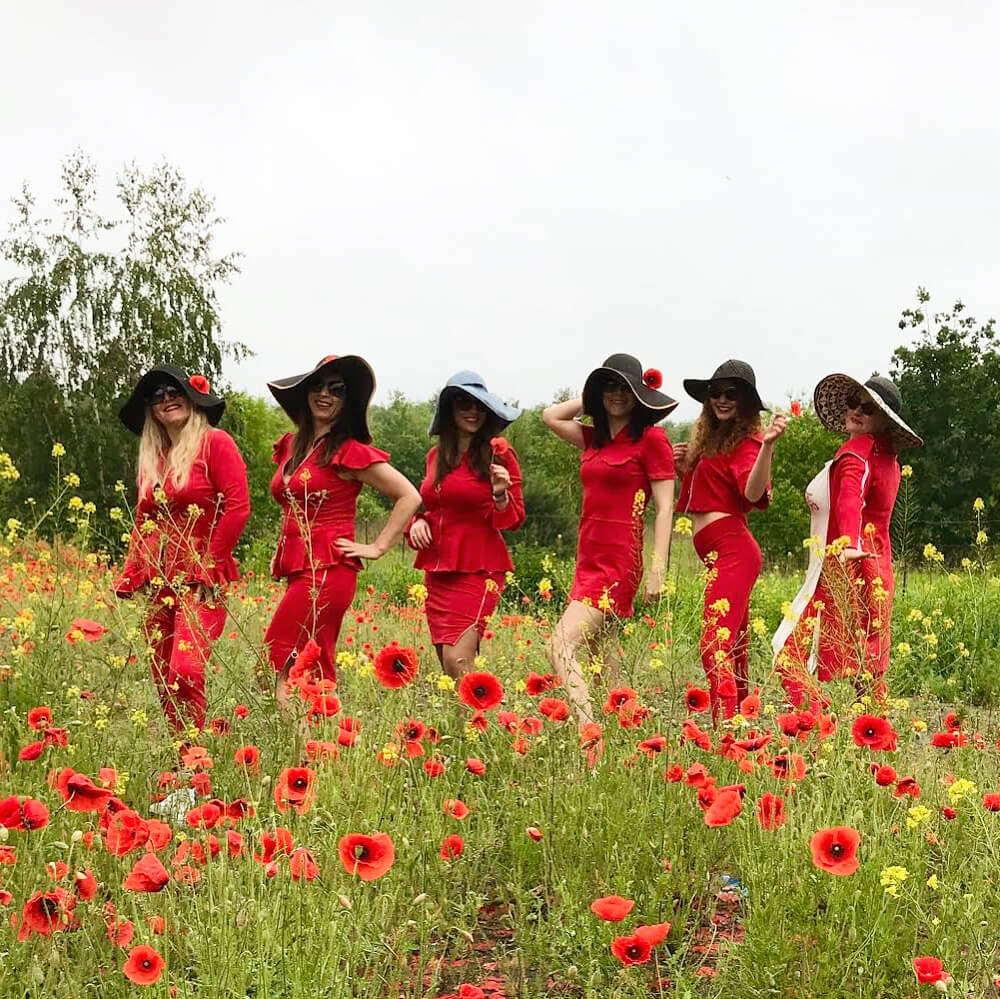
NAJWAŻNIEJSZE AKCEPTUJ SIEBIE TAKĄ JAKA JESTEŚ I BĄDŹ DLA SIEBIE SAMEJ KRÓLOWĄ ŻYCIA A RESZTA BĘDZIE DOPEŁNIENIEM🥰❤️👑



